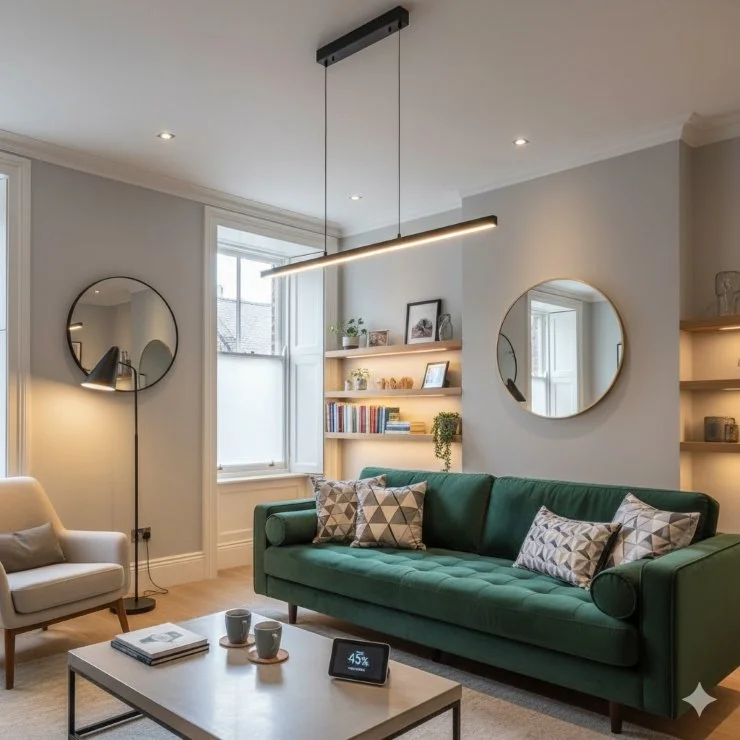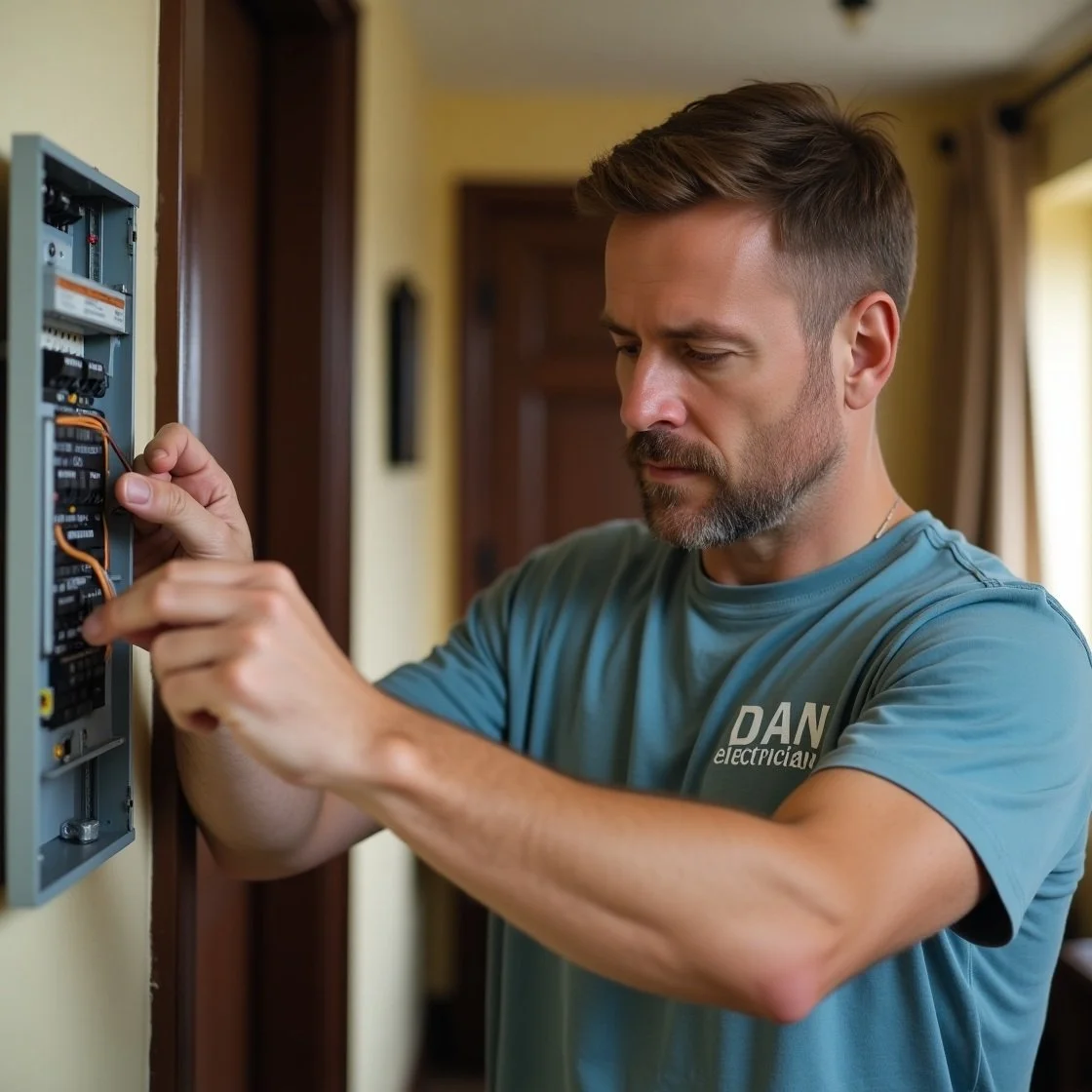Brighter Future, Lower Bills: How Proper Lighting Improves Energy Efficiency
Are your high electricity bills leaving you in the dark? In a vibrant city like Liverpool, every penny counts, and surprisingly, your home's lighting setup could be a silent drain on your energy—and your wallet. As your trusted local experts, Dan Electrician is here to shine a light on one of the most effective ways to cut your power consumption: adopting energy-efficient lighting.
This comprehensive guide will explore how simple, strategic choices in your home lighting can drastically reduce your energy use, save you money, and contribute to a greener Liverpool. We’ll delve into the world of LED technology and beyond, providing actionable advice you can implement today. Ready to illuminate your home more intelligently and efficiently? Let's flick the switch!
The Hidden Cost of Outdated Lighting: Why Efficiency Matters
Many homes in Liverpool still use older lighting technology, such as traditional incandescent or halogen bulbs, which are inherently inefficient. These bulbs operate by heating a filament until it glows—a process that wastes a significant amount of energy as heat, not light.
In fact, an incandescent bulb converts up to 90% of the electricity it uses into heat, leaving only a meagre 10% for light production. This not only inflates your utility bills but also adds unnecessary heat to your home, sometimes forcing your air conditioning (if you have it) to work harder in the summer!
By transitioning to proper lighting solutions, you are not just changing a bulb; you are embracing a fundamental shift in energy management. The payoff is immediate and long-lasting, directly improving your home's overall energy efficiency.
LED Lighting: The Brightest Star in Energy-Efficient Lighting
The rise of the Light Emitting Diode (LED) has revolutionised the lighting industry, making it the cornerstone of modern, energy-efficient lighting solutions. LEDs are a form of solid-state lighting that converts electricity into light using a semiconductor, making them vastly superior to older bulbs.
Unpacking the Incredible Efficiency of LEDs
The Bottom Line: A typical 9-watt LED bulb can produce the same amount of light (lumens) as a 60-watt incandescent bulb. Over a year, this small change in your home lighting can save you a surprising amount of money.
Dan Electrician’s Anecdote: We recently helped a client in Allerton switch their entire house from halogen spotlights to integrated LED downlights. They were initially hesitant about the upfront cost, but after just three months, they saw their electricity bill drop by over 25%! It proved how quickly the initial investment is recouped through energy savings.
Beyond LEDs: Other Efficient Lighting Options
While LEDs are the champion, they aren't the only option available for enhancing your energy-efficient lighting setup. You may still encounter, or be using, other types:
Compact Fluorescent Lamps (CFLs): These were once the go-to "energy-saver" bulbs. They use a fraction of the power of incandescents, but LEDs have largely replaced them. CFLs still offer good efficiency but take time to reach full brightness and contain a small amount of mercury, requiring careful disposal.
Halogen Bulbs (Phased Out in the UK): Although they produced a bright, high-quality light, halogen bulbs were essentially a slightly more efficient version of the incandescent and have been phased out in the UK due to their poor energy efficiency. If you still have them, replacing them immediately with LEDs is one of the best moves you can make.
Our Recommendation: For almost all residential home lighting applications, particularly in the Liverpool area, we strongly advise transitioning to high-quality, long-lasting LED bulbs and fixtures.
Strategic Lighting Design for Maximum Energy Savings
Achieving maximum energy efficiency isn't just about the bulb; it's also about how and when you use the light. A well-planned lighting design can drastically cut down on unnecessary consumption.
1. Focus on Task and Ambient Lighting
Stop illuminating your entire kitchen just to read a recipe! Smart lighting design separates light into three categories:
Ambient: General, overall light (e.g., ceiling fixtures).
Task: Focused, bright light for specific activities (e.g., under-cabinet lighting, desk lamps).
Accent: Highlights features or architectural details (e.g., picture lights).
By using task lighting—like LED strips under your cabinets or a focused desk lamp—you can use less powerful, lower-energy bulbs for the overall ambient light, saving energy while improving visibility where you need it most.
2. Embrace Smart Controls
The future of home lighting is intelligent, providing unparalleled control over your consumption:
Dimmers: Installing LED-compatible dimmer switches allows you to lower the light level when full brightness isn't needed. Dimming a light by just 25% can translate into roughly 20% energy savings.
Motion and Occupancy Sensors: Perfect for utility rooms, hallways, bathrooms, or outdoor security, these sensors ensure lights only turn on when a room is occupied and switch off automatically when empty. No more shouting, "Turn off the lights!"
Timers and Smart Switches: Program your lights to turn off at a certain time or connect them to smart home systems to adjust automatically based on your schedule, ensuring outside lights aren't blazing away at midday.
3. Maximise Natural Light
The most energy-efficient lighting source is, of course, free! Design your interior spaces to harness as much natural daylight as possible.
Open Blinds and Curtains: Keep windows clear during the day.
Use Reflective Surfaces: Strategically placed mirrors can bounce natural light deeper into a room, reducing the need for artificial light until later in the evening.
Light Paint Colours: Use lighter colours on walls and ceilings to reflect light rather than absorb it.
Actionable Steps: Your Energy-Efficient Lighting Checklist
As the leading Liverpool electrician for energy-saving solutions, Dan Electrician has compiled a quick, easy-to-follow checklist to kickstart your journey to a more energy-efficient home lighting setup:
✅ Audit Your Bulbs: Identify any remaining incandescent or halogen bulbs and plan to replace them with quality LEDs. Check the lumen output, not the wattage, to ensure you get the brightness you need.
✅ Prioritise High-Use Areas: Start your upgrade in rooms where lights are on longest—kitchens, living rooms, and hallways.
✅ Install Dimmers: Consult a professional electrician to install dimmer switches in key areas for flexible light control and automatic savings.
✅ Switch Outdoor Fixtures: Replace all outdoor and security lighting with LED fixtures, ideally connected to a timer or a daylight/motion sensor.
✅ Review Task Lighting: Assess if you can replace a bright overhead light with a lower-wattage ambient fixture and supplement it with dedicated task lighting.
For installations, upgrades, or safety checks related to your energy-efficient lighting project in Liverpool, always call a certified professional like Dan Electrician to ensure the work is done safely and to the highest standards.
Conclusion: A Brighter, Cheaper Liverpool Home
The connection between proper lighting and improved energy efficiency is undeniable. By making the switch to energy-efficient lighting—spearheaded by versatile LED technology—and implementing smart control strategies, you are taking a powerful step toward securing a lower energy bill and a smaller carbon footprint.
It's not just a trend; it's a smart, long-term investment in your home.
Ready to transform your home lighting and energy bill?
Implement: Start with the easy steps today, like swapping out a single old bulb.
Share: Know someone else in Liverpool struggling with high bills? Share this article!
Comment: Have you already made the switch? Tell us about the savings you’ve seen in the comments below!

